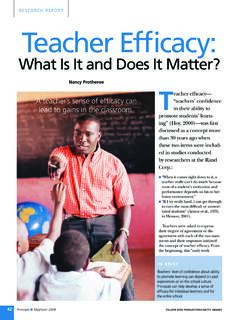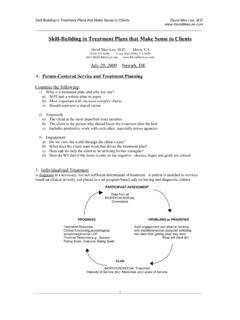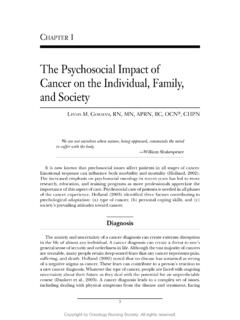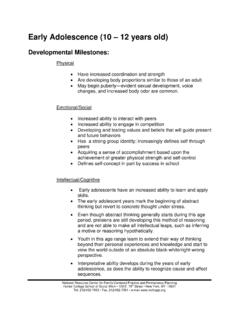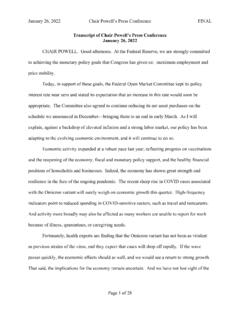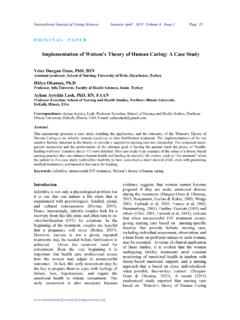Transcription of HOW STRONG ARE U.S. TEACHER UNIONS? A STATE-BY …
1 HOW < strong >STRONGstrong > ARE < strong >TEACHERstrong > < strong >UNIONS?strong > A < < strong >STRONGstrong > >STATE-BYstrong >STRONGstrong > > -STATE COMPARISONBY AMBER M. WINKLER, JANIE SCULL, & DARA ZEEHANDELAARFOREWORD BY CHESTER E. FINN, JR. AND MICHAEL J. PETRILLI OCTOBER 2012 Foreword ..4 Executive Summary ..8 Introduction ..15 Background ..20 Part I: Evaluating < strong >TEACHERstrong > Union Strength ..22 Methodology ..26 Part II: Findings ..32 America s Strongest < strong >TEACHERstrong > Unions ..36 America s Weakest < strong >TEACHERstrong > Unions ..41 Part III: Taking a Closer Look < strong >TEACHERstrong > Union Influence by Area ..44 Area 1: Resources and Membership ..44 Area 2: Involvement in Politics ..45 Area 3: Scope of Bargaining ..48 Area 4: State Policies ..49 Area 5: Perceived Influence ..50 Part IV: Conclusions and Takeaways ..53 Part V: State Profiles ..60 Alabama ..61 Alaska ..67 Arkansas ..79 California ..85 Colorado ..91 Connecticut ..97 Delaware ..103 District of Columbia ..109 Florida.
2 115 Georgia ..121 Hawaii ..127 Idaho..133 Indiana ..145 Iowa ..151 Kansas ..157 CONTENTS Kentucky ..163 Louisiana ..169 Maine ..175 Maryland ..181 Massachusetts ..187 Michigan ..193 Minnesota ..199 Mississippi ..205 Missouri ..211 Montana ..217 Nebraska ..223 Nevada ..229 New Hampshire ..235 New Jersey ..241 New Mexico ..247 New York ..253 North Carolina ..259 North Dakota ..265 Ohio ..271 Oklahoma ..277 Oregon ..283 Pennsylvania ..289 Rhode Island ..295 South Carolina ..301 South Dakota ..307 Tennessee ..313 Texas ..319 Utah ..325 Vermont ..331 Virginia ..337 Washington ..343 West Virginia ..349 Wisconsin ..355 Wyoming ..361 Appendix A: Detailed Methodology and Rationale ..367 Indicators and Weighting ..367 Detailed Metric and Rationale ..369 Appendix B: State-Level NEA and AFT Affiliates ..402 Endnotes ..4044 HOW < strong >STRONGstrong > ARE < strong >TEACHERstrong > UNIONS? A < < strong >STRONGstrong > >STATE-BYstrong >STRONGstrong > > -STATE COMPARISONF orewordSo we resolved to dig deeper, determined to parse the differences in strength across state-level unions in the fifty states plus the District of were delighted and appreciative when Education Reform Now an affiliate of Democrats for Education Reform agreed to join, co-sponsor, and help fund this turned into one of the most challenging research projects we have ever undertaken at the Fordham Institute.
3 Let us acknowledge at the outset that it s not a perfect study. (We offer some thoughts as to how we and others might approach this thorny topic in the future.) Let us admit that its conclusions are more nuanced, even equivocal, than we re accustomed to. And let us recognize that, just as we were gathering and analyzing reams of data, multiple factors economic difficulties, political shifts, court decisions, changing policy agendas, the arrival of many new players conspired to produce enormous flux in precisely the realms that we were examining. Sometimes we found that a mere month could render part of our laboriously-assembled data obsolete; we adjusted where we could, but eventually had to cease collecting and start making sense of our data. In the end, we learned a ton about individual states, about national patterns, Everyone knows that < strong >TEACHERstrong > unions matter in education politics and policies, but it s hard to determine just how much they matter and whether they wield greater influence in some places than in s plenty of conventional wisdom on this topic, mostly along the lines of, unions are most powerful where they represent most teachers and least consequential where their bargaining rights and revenues are restricted.
4 But is that really true? And even if it is, does it oversimplify a much more complex and nuanced situation?Veterans of the ed-policy wars including our own trustee Rod Paige, who is both a former Secretary of Education and a former local superintendent in the biggest district in the biggest state that bans collective bargaining insisted to us that < strong >TEACHERstrong > unions exert influence in many ways at many levels, not just at the bargaining deserved deeper investigation, particularly since union critics (many of them also ardent education reformers) generally assert that unions are the greatest obstacle to needed changes in K 12 schooling, while union defenders (and supporters of the education status quo) insist that these organizations are bulwarks of professionalism and safeguards against untested < strong >STRONGstrong > ARE < strong >TEACHERstrong > UNIONS? A < < strong >STRONGstrong > >STATE-BYstrong >STRONGstrong > > -STATE COMPARISONF orewordabout unexpected relationships, and surprising are a few highlights: < strong >TEACHERstrong > strikes, like the one recently concluded in Chicago, are legal in fourteen states and illegal in thirty-seven.
5 Thirty-two states require local school boards to bargain collectively with their teachers, fourteen states permit local boards to do this, and five states prohibit collective bargaining altogether (Georgia, North Carolina, South Carolina, Texas, and Virginia). Twenty-three states are right to work states, which prohibit unions from collecting agency fees from non-members.* Twenty-eight jurisdictions allow agency fees. In the 2010 state election cycle, < strong >TEACHERstrong > unions in twenty-two states were among the top ten overall donors (excluding individual donations) to candidates for governor and other executive positions, legislature, high court, and elected education positions. In twenty-one states, they were among the top five highest-giving interest groups (including Colorado and Indiana, where they ranked first). In just two states (Pennsylvania and New Jersey) did our survey of insiders unanimously deem < strong >TEACHERstrong > unions to be the most influential entities in shaping education policy over a recent three-year period.
6 But informants in twenty states found the < strong >TEACHERstrong > unions to be generally more influential, on average, than all other entities (including the state school board, state superintendent, governor, legislators, business interests, and advocacy groups). The unions influence may be waning at the state level. For the three years prior to the 2011 legislative session, education policies in most states reflected union priorities. But in 2011, a growing number of legislatures were enacting policies that were less in line with union that we did not link our overall rankings to state-level student achievement. Of all the data included in our metric, only a few of them (like < strong >TEACHERstrong > employment policies) might affect student achievement. Others, like state spending on education, could touch students indirectly, but there s no < strong >STRONGstrong > evidence to support their link to student performance.
7 We also have a timing problem since many state policies are in flux and don t align with point-in-time snapshots of achievement. Plus, we know that many other factors at both the state and local level could impact students, so theorizing that a relationship exists between state-level union activity and student achievement strikes us as short-sighted. Still, we can t resist eyeballing whether policies in a few high-performing states are more in line with the positions of reformers or traditional unions (without pointing fingers either way). Massachusetts, the highest-achieving state in the land, is a * Something else we learned: The proper definition of right-to-work has nothing to do with denying unions the right to bargain collectively. Right-to-work states stop unions from requiring union membership (and payment of dues or other union fees) as a condition of employment.
8 In any state, teachers are free not to join their local union, but in non-right-to-work states the union can still charge agency fees to non-member teachers. In right-to-work states, unions cannot charge agency fees, only membership dues. While just five states ban collective bargaining by teachers, twenty-three are right-to-work states that prohibit agency < strong >STRONGstrong > ARE < strong >TEACHERstrong > UNIONS? A < < strong >STRONGstrong > >STATE-BYstrong >STRONGstrong > > -STATE COMPARISONF orewordmixed bag some policies are aligned to union goals, others not. Two other high achievers, Virginia and Colorado, part ways: In the Old Dominion, policies are highly aligned to union interests, but that s not the case in the Centennial State. And education policies in California, with its dismal achievement record, largely do not reflect union interests, while those in Mississippi, another notorious low performer, are more aligned to them than nearly anywhere else.
9 * All of that to say that no one on either side of the ed-reform divide should be glib about this topic. Plenty more is waiting to be learned about < strong >TEACHERstrong > unions, how to gauge their strength in the many venues and mechanisms by which they exert it, and their role in education policy. View this study as adding another powerful lens to a telescope that s still being assembled. But peer through that lens and you will see a lot including some surprises, paradoxes, and big study was the product of many hands and heads. We re grateful to the Bodman Foundation, the Lynde and Harry Bradley Foundation, and Education Reform Now for their financial support, as well as to our sister organization, the Thomas B. Fordham Foundation. We extend special thanks to Mitch Price, former legal analyst at the Center for Rein-venting Public Education, who assisted in data collection and report writing.
10 Former Education Pioneer Laurent Rigal assisted with survey development. Project advisors provided tremendously useful input on the * See 2011 NAEP state averages on 4th and 8th grade reading and math assessments, available design and on successive drafts of this complex report. In that capacity, we re grateful to Emily Cohen, independent con-sultant and former district policy director at the National Council on < strong >TEACHERstrong > Quality (NCTQ); Jonathan Gyurko, co-founder and senior vice president, Leeds Global Part-ners, LLC; Michael Hartney, doctoral can-didate in Political Science at the University of Notre Dame and a National Academy of Education/Spencer Foundation Dissertation Fellow; Frederick Hess, director of educa-tion policy studies, American Enterprise Institute; and Van Schoales, chief executive of A+ Denver. Needless to say but we ll say it anyway we could not incorporate every suggestion of every advisor, so complaints and criticisms should be addressed to the authors, not the who provided useful feedback on the study design and/or survey instrument include Katharine Strunk, Tim Daly, Joe Williams, Bill Koski, Mike Antonucci, Dan Goldhaber, Terry Moe, and Marc Porter-Magee.










